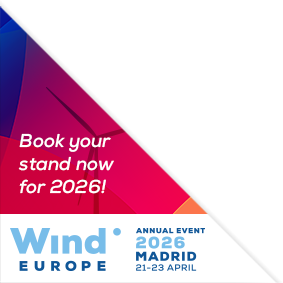Posters
Siblings:
ProceedingsProgrammeSpeakersPostersContent PartnersPowering the Future stageMarkets TheatreStudent programmeResearch & Innovation in actionProgramme Committee & abstracts reviewersPresenters’ dashboardCome meet the poster presenters to ask them questions and discuss their work
We would like to invite you to come and see the posters at our upcoming conference. The posters will showcase a diverse range of research topics, and will give delegates an opportunity to engage with the authors and learn more about their work. Whether you are a seasoned researcher or simply curious about the latest developments in your field, we believe that the posters will offer something of interest to everyone. So please join us at the conference and take advantage of this opportunity to learn and engage with your peers in industry and the academic community.
On 9 April at 17:15, we’ll also hold the main poster session and distinguish the 7 best posters of this year’s edition with our traditional Poster Awards Ceremony. Join us at the poster area to cheer and meet the laureates, and enjoy some drinks with all poster presenters!
We look forward to seeing you there!

PO124: Estimating hourly production profiles using a calibrated mesoscale dataset accounting for time-based technical and environmental losses
Thomas Hallemeesch, Project Engineer - Onshore Renewables, Tractebel
Abstract
The growing contribution of wind energy to electricity production is leading to increasingly variable power output patterns, driven by fluctuations in weather conditions. This variability poses significant challenges for grid stability and effective energy management. Additionally, it has contributed to the rising popularity of power purchase agreements (PPAs) over traditional energy contracts. Given these and other factors, understanding and accurately estimating variable production profiles is crucial. This study introduces a novel methodology to generate a representative hourly production profile for a wind farm, using calibrated mesoscale data. This approach accounts for time-based technical and environmental losses, ensuring that the resulting power output is realistic and representative of annual variations. The model uses the EMD-WRF Europe+ mesoscale dataset, which is calibrated using 10-minute average SCADA data from operational wind farms in Belgium, as presented at WindEurope 2023 (PO176). This methodology allows to perform an Energy Yield Assessment (EYA) without requiring measurements campaigns. The methodology factors in the anticipated curtailments and losses. Noise and/or bats curtailments are accounted for on the relevant time stamps directly in the EYA. Shadow and ice curtailments, together with technical losses, such as maintenance and electrical efficiencies are allocated to realistic timestamps throughout the hourly production profile. While current methodology in the industry typically averaged such losses over the entire year, this approach distributes them across the year according to a set of rules that closely mirror realistic conditions, based on performance feedback of operating wind farms in Belgium. This can lead to improvements in energy management, storage sizing, PPA-negotiation and financial modeling of wind projects.



